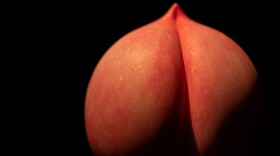The European Space Agency made history on Wednesday morning, landing the first man-made object on the surface of a comet.
The lander, named Philae, sent its first signals just after 11 am ET from comet 67P/Churyumov-Gerasimenko. Scientists could be seen celebrating on the European Space Agency's livestream after the signal, which had been relayed from the orbiting Rosetta spacecraft, reached Earth.
One potential hiccup is Philae's landing harpoons, which did not fire correctly. That means the lander is not anchored to the comet's surface, and may have bounced after its initial impact.
"Our ambitious Rosetta mission has secured a place in the history books: not only is it the first to rendezvous with and orbit a comet, but it is now also the first to deliver a lander to a comet’s surface," said Jean-Jacques Dordain, ESA's Director General, in a news release.
"We are extremely relieved to be safely on the surface of the comet, especially given the extra challenges that we faced with the health of the lander," said Stephan Ulamec, Philae Lander Manager at the DLR German Aerospace Center, referring to a technical problem with the craft's landing gear discovered earlier in the day. "In the next hours we'll learn exactly where and how we've landed, and we'll start getting as much science as we can from the surface of this fascinating world."

The landing was the culmination of a ten-year, 6.4 billion kilometer mission. Rosetta launched in 2004 and it slingshot itself past Earth three times to acquire enough speed to pull alongside the comet, which is traveling at 34,400 miles per hour and currently between the orbits of Mars and Jupiter.
Rosetta is the first mission to pull alongside a comet, escort it as it orbits the sun, and deploy a lander to a comet’s surface.
So far, the Rosetta probe crossed the asteroid belt twice. In June, it detected water out-gassing from the surface of the comet at the rate of 300 milliliters per second, or about two glasses.
The probe has discovered craters, cliffs, and boulders the size of houses on the surface of the comet. It’s captured an array of breathtaking photographs and also discovered hydrogen sulfide gases (the scent of rotten eggs), ammonia, and methane coming off the comet.
The plan is for Philae to carry out the majority of its science mission over the next 2.5 days. According to a news release from the ESA, that's "assuming that its main battery remains in good health." The agency said extended periods of science "may be possible," assuming the landing craft's solar panels are still working and have access to sunlight.
A media briefing on the landing is scheduled for 8 am Thursday.






